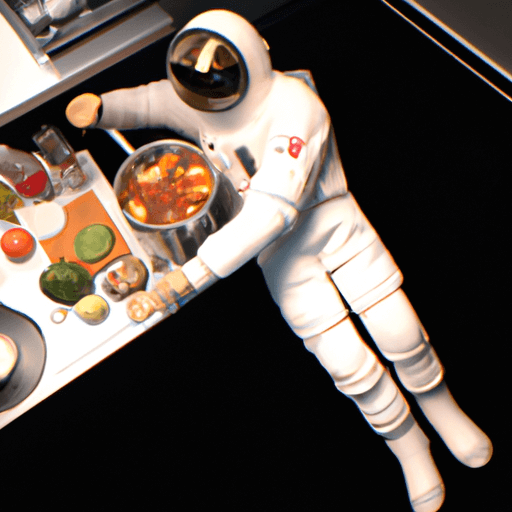The Reciprocal Relationship between Space Travel and Culinary Arts
Since the dawn of space exploration, the challenges of feeding astronauts have driven numerous technological and culinary innovations. Similarly, advancements in the culinary arts have dramatically influenced the quality of life endured by these pioneers of space exploration.
The History of Food in Space
In the early days of space travel, food was largely limited to basic sustenance. The first meals consumed in space were simple and practical, with meals often coming in tube-like packages, akin to toothpaste tubes. As technology advanced, so too did the quality and diversity of food. This included the advent of freeze-dried foods, which allowed astronauts to enjoy a wider variety of meals. NASA has an extensive article covering this journey.
Challenges and Solutions of Cooking and Eating in Zero Gravity
Zero-gravity presents numerous challenges for the preparation and consumption of food. Food particles can float about, potentially damaging equipment or being inhaled by astronauts. To counter this, foods are often consumed in contained, semi-liquid states, or specially-packaged to prevent floating parcels. Additionally, the lack of refrigeration means foods must be carefully preserved and packaged to maintain freshness and nutritional content.
Advancements in Food Preservation and Packaging for Space Travel
Space travel has necessitated some of the most impressive advancements in food preservation and packaging technology. From the microwave to vacuum sealing, many features of contemporary kitchens owe their existence to innovations driven by space travel. These developments have not only made space far more livable for astronauts, but have also had broad impacts on the culinary world.
Potential Food Solutions for Long-Term Space Missions
Long-term space missions add a new dimension to the challenge of feeding astronauts. Ideas being explored include cultivating plants in space and using precision fermentation to produce food. Not only would this provide fresh, nutritious food, but also assist with oxygen production and waste recycling, creating a sustainable closed-loop system. NASA's VEGIE program is a prime example of this approach.
Futuristic Culinary Trends and Impacts
Space travel innovations are not likely to stay in space. We can anticipate seeing more of these advancements filtering into the broader culinary world. Precision fermentation could produce high-quality proteins without the environmental footprint of traditional agriculture. Similarly, the cultivation of plants in controlled conditions could lead to breakthroughs in sustainable agriculture, perhaps even leading to a new era of urban farming. Embracing these innovations will not only improve our consumption today but also ensure the survival of future generations, on and beyond Earth.




















Comments
Leave a Comment